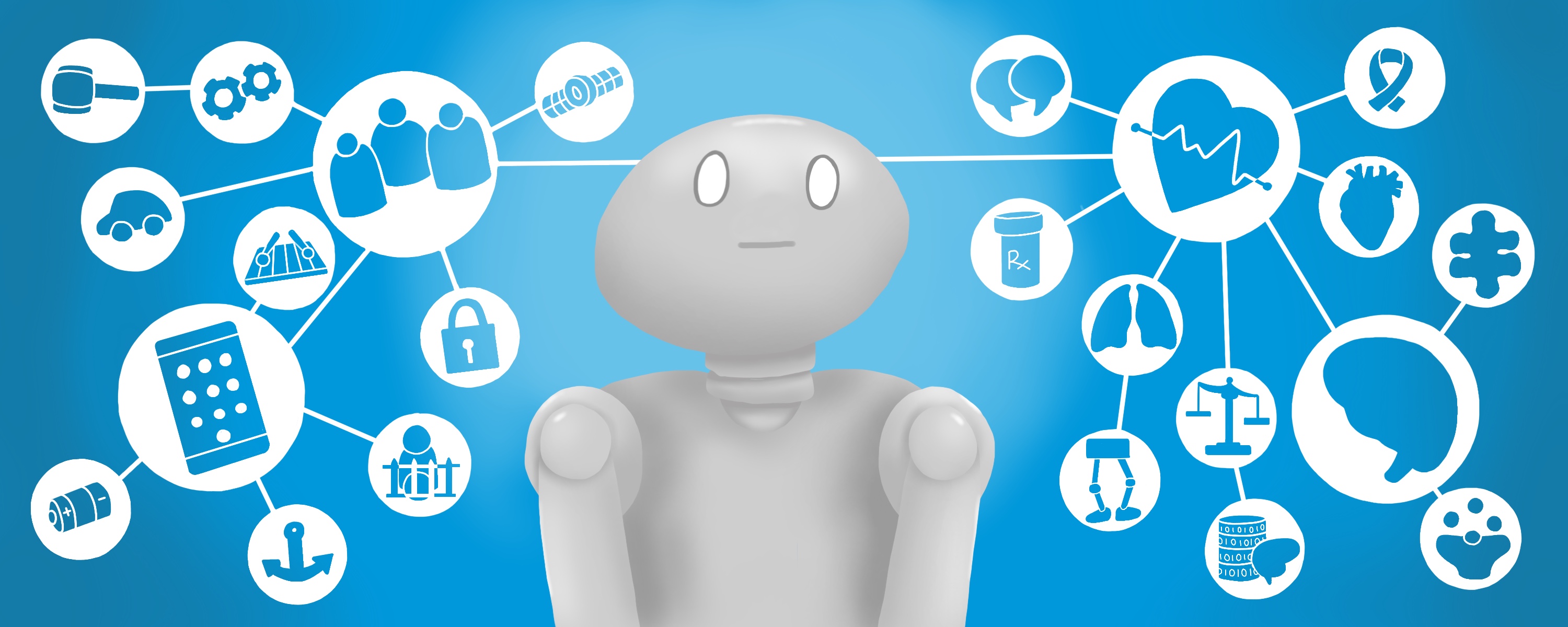
When an early human learned to use a sharp rock to crack open bones of dead animals to access a new source of nutrition, time and energy was released for other purposes such as fighting, finding a mate, and making more inventions. The invention of the steam engine in the 1700s tapped into an easily portable form of machine power that greatly improved the efficiency of factories as well as ships and trains. Automation has always been a path to efficiency: getting more with less. Especially since the mid 20th century, technological development has lead to a period of unprecedented progress in automation. AI is a continuation of this progress.
Each step towards better automation changes the working life. With a sharp rock, there was less need for hunting and gathering food; with the steam engine, there was less need for horses and horsemen; with the computer, there is less need for typists, manual accounting, and many other data processing (and apparently more need for watching cat videos). With AI and robotics, there is even less need for many kinds of dull, repetitive work.
In the past, every time one kind of work has been automated, people have found new kinds to replace it. The new kinds of work are less repetitive and routine, and more variable and creative. The issue with the current rate of advance of AI and other technologies is that during the career of an individual, the change in the working life might be greater than ever before. It is conceivable that some jobs such as driving a truck or a taxi, may disappear within a few years’ time span. Such an abrupt change could lead to mass unemployment as people don’t have time to train themselves for other kinds of work.
The most important preventive action to avoid huge societal issues such as this is to help young people obtain a wide-ranging education. This that provides a basis for pursuing many different jobs and which isn’t in high risk of becoming obsolete in the near future.
It is equally important to support life-long learning and learning at work, because there are going to be few of us who will do the same job throughout their entire career. Cutting the hours per week would help offer work for more people, but the laws of economics tend to push people to work more rather than less unless public policy regulating the amount of work is introduced.
Because we can’t predict the future of AI, predicting the rate and extent of this development is extremely hard. There have been some estimates about the extent of job automation, ranging up to 47% of US jobs being at risk reported by researchers at the University of Oxford. The exact numbers such as these – 47%, not 45% or 49% –, the complicated-sounding study designs used to get them, and the top universities that report them tend to make the estimates sounds very reliable and precise (recall the point about estimating life expectancy using a linear model based on a limited amount of data). The illusion of accuracy to one percentage is a fallacy. The above number, for example, is based on looking at a large number of job descriptions – perhaps licking the tip of your finger and putting it up to feel the wind – and using subjective grounds to decide which tasks are likely to be automated. It is understandable that people don't take the trouble to read a 79 page report that includes statements such as "the task model assumes for tractability an aggregate, constant-returns to-scale, Cobb-Douglas production function." However, if you don't, then you should remain somewhat sceptical about the conclusions too. The real value in this kind of analysis is that it suggests which kinds of jobs are more likely to be at risk, not in the actual numbers such as 47%. The tragedy is that the headlines reporting that "nearly half of US jobs at risk of computerization" are remembered and the rest is not.
So what are then the tasks that are more likely to be automated. There are some clear signs concerning this that we can already observe:
Autonomous robotics solutions such as self-driving vehicles, including cars, drones and boats or ferries, are just at the verge of major commercial applications. The safety of autonomous cars is hard to estimate, but the statistics suggests that it is probably not yet quite at the required level (the level of an average human driver). However, the progress has been incredibly fast and it is accelerating due to the increasing amount of available data.
Customer-service applications such as helpdesks can be automated in a very cost-effective fashion. Currently the quality of service is not always to be cheered, the bottle-necks being language processing (the system not being able to recognize spoken language or to parse the grammar) and the logic and reasoning required to provide the actual service. However, working applications in constrained domains (such as making restaurant or haircut reservations) sprout up constantly.
For one thing, it is hard to tell how soon we’ll have safe and reliable self-driving cars and other solutions that can replace human work. In addition to this, we mustn’t forget that a truck or taxi driver doesn’t only turn a wheel: they are also responsible for making sure the vehicle operates correctly, they handle the goods and negotiate with customers, they guarantee the safety of their cargo and passengers, and take care of a multitude of other tasks that may be much harder to automate than the actual driving.
As with earlier technological advances, there will also be new work that is created because of AI. It is likely that in the future, a larger fraction of the workforce will focus on research and development, and tasks that require creativity and human-to-human interaction.
This post is copied without permission from the Elements of AI course. Please remote it and other content that violates copyright. Original source: https://course.elementsofai.com/6/2
ReplyDelete